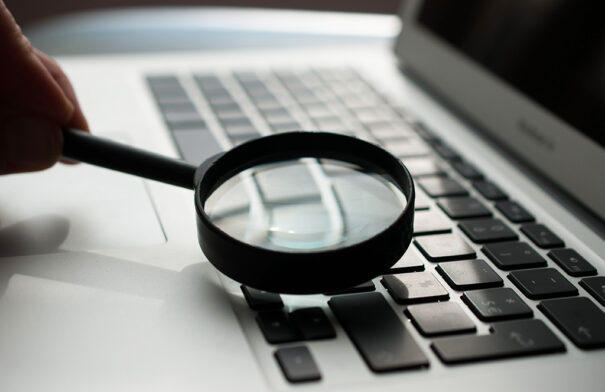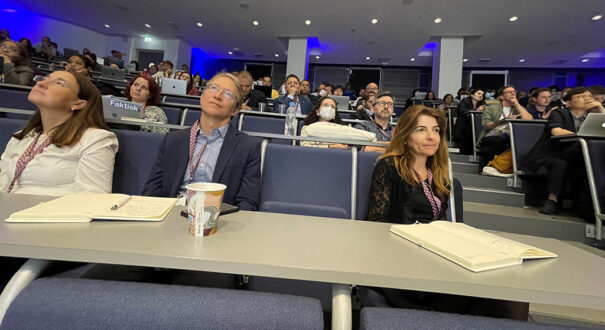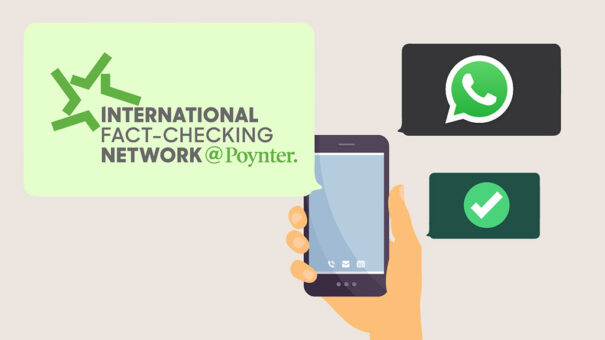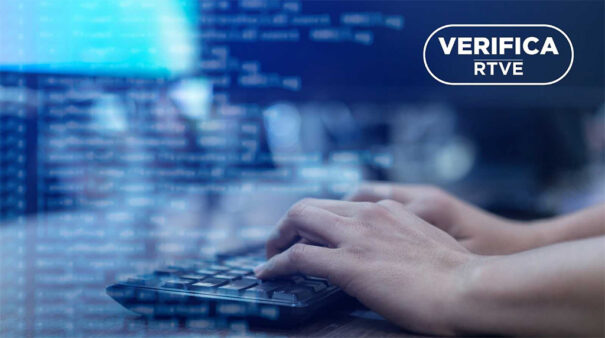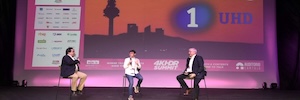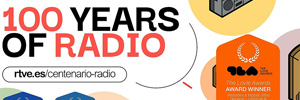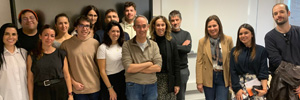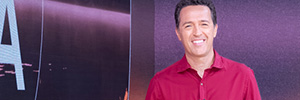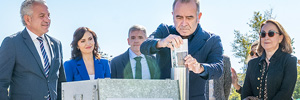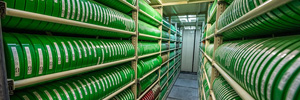Verdades y medias verdades en Oslo: las claves tecnológicas del fact checking
Montserrat Rigall, periodista de RTVE, traslada las principales líneas de aprendizaje extraídas de su presencia en el encuentro mundial de fact-checkers y adelanta cómo el proyecto IVERES de RTVE propone aunar y crear herramientas basadas en IA.
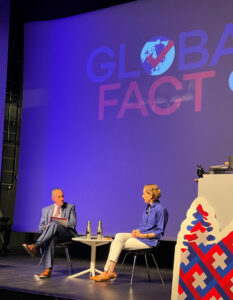 Centenares de profesionales miembros de entidades y organizaciones de verificación de informaciones sobre hechos de todo el mundo se dieron cita en Oslo el pasado mes de junio. La primera conferencia presencial en tres años ha servido para evidenciar que las desinformaciones nos inundan cada día más a nivel planetario y que sus formas de entrega y de consumo son cada vez más variopintas. Además, se ha hecho hincapié en las consecuencias negativas para una sociedad democrática que pueden llegar a tener la desinformación y la postverdad alimentando discursos populistas.
Centenares de profesionales miembros de entidades y organizaciones de verificación de informaciones sobre hechos de todo el mundo se dieron cita en Oslo el pasado mes de junio. La primera conferencia presencial en tres años ha servido para evidenciar que las desinformaciones nos inundan cada día más a nivel planetario y que sus formas de entrega y de consumo son cada vez más variopintas. Además, se ha hecho hincapié en las consecuencias negativas para una sociedad democrática que pueden llegar a tener la desinformación y la postverdad alimentando discursos populistas.
Distintos panelistas han enfatizado en la diferencia entre información errónea y desinformación. La información errónea es información falsa que se comparte en redes sociales, medios de comunicación, líneas telefónicas o vía interpersonal a pesar de que no se tenga la intención de engañar. La desinformación, en cambio, es información falsa creada o compartida con la intención deliberada de engañar.
According to Joan Donovan, investigadora especializada en la desinformación en los mass media, la manipulación de los medios de comunicación sirve para “descarrilar la democracia” en nuestra sociedad y para evitarlo hay que “formar a periodistas y a ciudadanos con el fin de que aprendan a desacreditar” determinadas informaciones maliciosas.
Oslo, capital de la verificación
Chequeos e informaciones verificadas han llenado de verdades y medias verdades la capital noruega durante 4 días de junio de 2022. La cumbre ha puesto en común el conocimiento del mundo académico y el mundo práctico de la verificación frente a la amenaza de la desinformación. No hay duda de que hay grandes desinformadores, unos con intereses políticos, otros con intereses económicos y todos ellos ejecutan oleadas de campañas contaminantes de desinformación con relativa facilidad y con pocos costes, a un precio casi irrisorio comparado con el daño que ocasionan. De ahí, que la oportunidad de entrar a formar parte de este colectivo cobra especial interés para proyectos novedosos como el de IVERES, un proyecto financiado por el Ministerio de Ciencia y Tecnología con fondos Next Generation de la Unión Europea y liderado por la Corporación de Radiotelevisión Española y UAB cuya naturaleza es estar al servicio del ciudadano y, según la Ley 17/2006, “garantizar la información objetiva, veraz y plural, que se deberá ajustar plenamente al criterio de independencia profesional y al pluralismo político, social e ideológico presente en nuestra sociedad”.
Oslo ha puesto de relieve que el identificar la desinformación es, más que una necesidad social, una urgencia global.
En este sentido, es de vital importancia disponer de herramientas y adecuarlas a las necesidades de los periodistas para ayudarnos en esta ardua labor de verificar y así mejorar nuestras rutinas habituales en las redacciones. Precisamente, el proyecto IVERES trabaja para generar una herramienta hecha “casi a medida” que esté a disposición de los periodistas en cuanto a verificación de imágenes de vídeo, de foto y de voz, así como también de metadato.
Oslo ha puesto de relieve que el identificar la desinformación es, más que una necesidad social, una urgencia global. Se pone encima de la mesa un intenso debate sobre cómo y quiénes deben evitar la propagación de informaciones falsas que conlleven a desestabilizar las bases de la democracia con una desafección institucional, política y social de los ciudadanos.
En definitiva, cobra absoluto sentido nuestra presencia en Noruega de este proyecto de la Cátedra de RTVE-Universidad Autónoma de Barcelona, que cuenta además con la participación de la Universidad Carlos III, la Universidad de Granada and the Universitat Politècnica de Catalunya. Actualmente, en la era postpandemia, no se puede ignorar un debate internacional de tal envergadura que permite sumar conocimiento con quienes lideran este subgénero periodístico y, en un futuro, la posibilidad de aportar iniciativas propias.
Global Fact y el IFCN
La cumbre, llamada Global Fact 9, es el encuentro más importante de chequeadores que existe actualmente en el mundo. Lo organiza la Red Internacional de Verificación de Hechos (IFCN), nacida en el 2015 en el estado norteamericano de Florida y cuya sede está en el Instituto Poynter, una entidad financiada por Bill & Melinda Gates Foundation, la Open Society Foundations y Google, entre otros.
La cita de verificación global ha congregado a más de 500 participantes de 69 países distintos. Más allá de las cifras que siguen creciendo año tras año, vale la pena poner en valor el nuevo subgénero periodístico que nace con la necesidad imperiosa de verificar las informaciones, más aún después de una pandemia mundial provocada por el covid-19 y de la Guerra de Ucrania que nos ha dejado a todos en la mayor de las incertidumbres jamás vividas en la era postmoderna.
The IFCN elaboró, un año después de su creación, un Código de Principios en el que se establece que la verificación tiene que ser transparente (es decir, no partidista) y comprometida con fundamentos clave: la equidad, la transparencia de las fuentes, la financiación y organización, la metodología y las correcciones abiertas y honestas. Estos 5 puntos rigen la labor de los adscritos al IFCN que, actualmente, aúnan ya en todo el mundo alrededor de medio centenar de entidades entre medios de comunicación, instituciones y empresas distintas.
No sería descabellado hacer hincapié en que estas verificaciones también tienen que “ser apartidistas” tal y como afirma la Doctora en Periodismo, Nereida Carrillo, una de las pioneras en acercar la verificación digital a jóvenes, docentes, familias y periodistas, a través de la plataforma Learn to Check. Carrillo asegura, con acierto a mi modo de ver, que también hay que “verificar a todos los partidos políticos”.
¿Por qué puede ser interesante ser miembro del IFCN? Porque suma credibilidad al trabajo de toda entidad ya que es requisito indispensable cumplir con este Código de Principios. En España son miembros EFE Verifica, Newtral (startup fundada en 2018 por la periodista Ana Pastor centrada en la producción para TV y plataformas, nuevas narrativas y fact-checking), Maldita.es y Verificat. La presencia de proyectos de índole tecnológica que aporten nuevas herramientas a estas tareas, basadas en Inteligencia Artificial, es especialmente oportuno e interesante. Éste es el caso del proyecto IVERES y más en concreto de las tareas que desarrolla en cuanto a tecnología se refiere dentro de la Cátedra RTVE Universidad Carlos III.
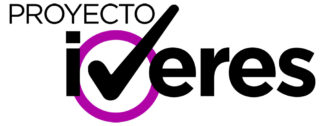 IVERES en el IFCN
IVERES en el IFCN
El objetivo final de IVERES es proporcionar una herramienta que facilite el trabajo periodístico con la ayuda de la inteligencia artificial aplicada en los Servicios Informativos del ente público por lo que persigue, a rasgos generales, lo mismo que el IFCN. Ambos trabajan en monitorear los formatos y hacer un seguimiento del impacto de la verificación. El organismo de Poynter, además, organiza un encuentro anual para promover la colaboración entre los fact checkers, ofrecer formación presencial y online y convocar becas.
Una de las ideas más reiteradas con las que ha arrancado el Global Fact 9 ha sido la de Baybars Orsek, director de la IFCN, al afirmar que “nuestra confianza colectiva en la información fiable y autorizada está siendo atacada por personas en el poder”. Baybars ha añadido que la “manipulación de la verdad hace que la gente sea vulnerable a los malos actores que capitalizan su falta de acceso a la información de calidad para sus propios beneficios. Los gobiernos autocráticos y los hombres fuertes de todo el mundo están siguiendo manuales similares para censurar la libertad de expresión y la disidencia bajo el nombre de la lucha contra las “noticias falsas””.
Protocolos inexistentes
Con respecto a intercambios de información y acuerdos con las instituciones, se han llevado a cabo pactos puntuales para proteger periodos electorales en Europa con algunos medios pero, a día de hoy, no existe ninguna conexión ni tampoco ningún protocolo establecido. Carlos Hernández Echevarría, coordinador en políticas públicas del fact-checker español Maldita.es, nos cuenta que su empresa trabaja con las entidades para verificar a diario algunos temas o porque éstas se interesan por una noticia en concreto, pero, alerta de un riesgo: “No se puede aceptar que una institución pública te imponga lo que es mentira o no”.
Sergio Hernández, responsable de EFE Verifica, asegura que la desinformación “es muy rentable porque consigues mucho resultado con muy poca inversión”.
La ley está clara sobre lo que es la calumnia pero, según Hernández, algunas instituciones la bordean: “Muchas veces las instituciones llevan a cabo iniciativas en vez de hacer los más básico que es ser más transparentes”. La petición de transparencia en las fuentes, en los costes, en los pagos y los cobros es una idea repetida en el Global Fact 9. Sergio Hernández, responsable de EFE Verifica, asegura que la desinformación “es muy rentable porque “consigues mucho resultado con muy poca inversión”.

Herramientas de verificación
Los investigadores presentes en Oslo han encontrado 134 herramientas y servicios de verificación de datos. En la ponencia Tecnología y Fact-checking titulada ‘Tecnología al rescate’, el profesor de la Universidad de Bergen, Carl-Gustav Lindren, ha puntualizado: “Los enfoques varían, pero todos parecen compartir el objetivo común de proporcionar información verdadera y confiable a un usuario, ya sea un periodista, un responsable de la toma de decisiones, un empresario, político o particular”.
Desde su punto de vista, llama la atención cuando afirma que “la tecnología no es suficiente para resolver desafíos sociales y políticos, como el desorden de la información”, y añade que “además de cuestiones fundamentales, como la falta de comprensión profunda de los problemas que queremos resolver, también hay graves limitaciones técnicas debido, por ejemplo, a problemas de datos”. En conclusión, Lindren asegura que “la desinformación es en gran medida un problema social y político que necesita un enfoque más amplio que las soluciones técnicas por sí solas”.
Dado el mínimo coste que tiene lanzar bulos, the inmediatez es exigible.
En este sentido, la investigadora Laurence Dierickx, afirma que “rara vez o nunca se utilizan herramientas algorítmicas diseñadas específicamente para el proceso de investigación periodística”, y añade que “los periodistas no son conscientes de que el asistente oculto facilite su proceso de investigación”.
La idea de una plataforma de verificación de datos completamente automatizada que pueda detectar un fake en tiempo real, y proporcionar instantáneamente una calificación sobre su precisión parece seguir siendo desafiante, a pesar de algunos avances. Dietrickx ha evocado algunos autores: “Una herramienta totalmente automatizada que juzgue que una afirmación es verdadera o falsa siempre está limitada en funcionalidad, precisión y comprensión”, según Masood & Aker, 2018.
Dado el mínimo coste que tiene lanzar bulos, la inmediatez es exigible. Ante una noticia posiblemente falsa, el ciudadano contacta con las empresas de verificación a través de WhatsApp. Un chatbot creado por las mismas organizaciones les responde según una base de datos. A partir de allí, se investiga con las propias fuentes y con la ayuda de la inteligencia artificial.
Plataformas más usadas
Entre las herramientas más comunes para comprobar la veracidad y la fiabilidad de unas imágenes está el llamado inicialmente Invid (In Video Veritas, https://www.invid-project.eu/) que se creó en el marco del Horizonte Europeo 2020, y cuya denominación actual es la de WeVerify InVid. Esta herramienta standalone o compatible como plugin de Chrome permite comprobar los metadatos (fecha publicación, lugar de grabación, duración, canal donde se aloja, fecha de creación de este canal…) de un vídeo de YouTube o de redes sociales para confirmar que no ha sido editado ni manipulado. Además, permite hacer una búsqueda inversa para llegar a la fuente y, entre otras funcionalidades, puede ampliar con detalle una imagen a través de la lupa, reconocer caracteres de una fotografía…
Otra herramienta muy común entre los verificadores es el Crowd Tangle que permite rastrear los enlaces compartidos en redes sociales. Los periodistas podemos usarla para comprobar el impacto de una noticia, de momento, sólo publicada en Facebook, Instagram, Twitter o Reddit, es decir, saber qué engagement ha tenido una publicación. Cuenta con dos versiones, una gratuita y otra de Facebook para medios de comunicación, porque Marc Zuckerberg la compró en 2016, cinco años después de su nacimiento. No obstante, esta herramienta está generando debate en tanto que algunos verificadores especulan con la posibilidad de que Meta la suprima antes de la entrada en vigor del Código Europeo de Prácticas sobre Desinformación. Preguntados por este tema a los representantes de Meta en Oslo, nadie de la empresa lo ha confirmado de forma oficial.
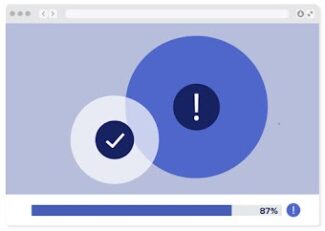 Si lo que buscamos es identificar imágenes manipuladas o falsas, podemos recurrir a Assembler, un detector de deepfakes para descubrir caras falsas. Se trata de una plataforma que con sólo subir una imagen se analizan pegado de píxeles para ocultar detalles, cambios en la saturación o el brillo.
Si lo que buscamos es identificar imágenes manipuladas o falsas, podemos recurrir a Assembler, un detector de deepfakes para descubrir caras falsas. Se trata de una plataforma que con sólo subir una imagen se analizan pegado de píxeles para ocultar detalles, cambios en la saturación o el brillo.
Para cuando queremos saber quién capturó una imagen o dónde está su origen, tenemos el TinEye, un motor de búsqueda que tiene anexadas más de 16 billones de imágenes con dos funciones en la opción TinEye Labs: Multicolr (permite encontrar imágenes con un mismo color) y Extract Colors (permite localizar fuentes de colores con sólo subir una imagen o añadir una URL).
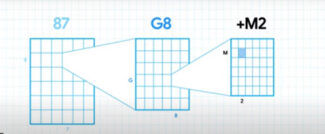 La geolocalización de Google Maps permite identificar un escenario en función de las sombras y los relieves. Además, la herramienta Plus Codes, basados en la latitud y la longitud, ayudan a definir una ubicación específica para una dirección convencional y lo hace a través de un sistema de cuadrícula y un conjunto de 20 caracteres alfanuméricos. Por ejemplo: JJXX+HR8, Seattle. Es muy útil si queremos identificar las entradas varias que pueda tener un edificio.
La geolocalización de Google Maps permite identificar un escenario en función de las sombras y los relieves. Además, la herramienta Plus Codes, basados en la latitud y la longitud, ayudan a definir una ubicación específica para una dirección convencional y lo hace a través de un sistema de cuadrícula y un conjunto de 20 caracteres alfanuméricos. Por ejemplo: JJXX+HR8, Seattle. Es muy útil si queremos identificar las entradas varias que pueda tener un edificio.
Google también ofrece la búsqueda inversa de imágenes con Google Images y la búsqueda de verificaciones a través del Google Fact Check Explorer. Se trata de una herramienta pensada para periodistas, investigadores y verificadores de hechos, por eso probablemente es poco conocida, pero puede usarla cualquiera.
Acuerdos interesantes
Entre los acuerdos que se están gestando está el del IFCN. Se consolidará en septiembre en forma de creación de un sello de garantía para quienes estén adscritos o quieran adherirse al organismo. Sería muy interesante para el proyecto IVERES estar en él para no perder presencia como medio de comunicación público, para seguir los avances de los protagonistas en verificación y, en un periodo breve de tiempo, poder aportar nuestros avances en la materia. Al fin y al cabo, el ente RTVE tiene una reputación mundial innegable, sobre todo, en los servicios informativos por lo que podemos aportarles conocimiento práctico en el desarrollo del ejercicio periodístico.
En otro orden de acuerdos, la Comisión Europea impulsa una red europea de observatorios para el estudio de medios digitales y contra la desinformación, liderada por el European Digital Media Observatory (EDMO). Con sede en Florencia, abarca 8 observatorios, uno de los cuales es Iberifier, un acuerdo ibérico-luso. Con este proyecto de reglamento de servicios digitales, DSA (Digital Services Act), se creará la figura de “señaladores de confianza” cuyo trabajo será alertar de contenidos ilícitos.
El resto de los integrantes son DE FACTO en Francia, IDMO en Italia, EDMO IRELAND, BENEDMO en los Países Bajos y Bélgica, CEDMO en Chequia, Eslovaquia, Polonia y Hungría, NORDIS en Finlandia, Suecia, Noruega y Dinamarca, y EDMO BELUX en Bélgica y Luxemburgo. A esta red se le suman organizaciones europeas de fact checkers con quien han establecido un acuerdo para impulsar detección y neutralización de desinformación relacionados con la guerra en Ucrania.
The verificación es un negocio que mueve mucho capital teniendo en cuenta que la mayor parte es privado y sin perder de vista que la desinformación es muy poco costosa y la eliminación de la misma supone grandes inversiones.
Otro ejemplo de acuerdo internacional lo encontramos en Brasil. Sérgio Lüdtke, editor del proyecto Comproba, nos explica en Oslo que esta coalición agrupa a unos 40 medios de comunicación, miembros de la Asociación Brasileña de Periodismo de Investigación (Abraji, por sus siglas en portugués).
Llama la atención que todos sigan un mismo método: las verificaciones se ponen en documento compartido entre varios periodistas de la coalición que comienzan a trabajar en la verificación. Después de discutirlo se adjudican funciones como el de ir a buscar la información, de quién va a responder, se buscan las fuentes originales, los responsables de publicar el rumor por primera vez. Cuando se ha finalizado se propone una verificación cruzada ya que, según Sérgio Lüdtke, antes de publicarse, el contenido debe ser verificado por otros tres medios que no participaron en la verificación original.
Detrás de esta iniciativa está Google y Metaverso. Ellos subvencionan a los medios para que pongan a tres de sus trabajadores a especializarse en la tarea de verificar. Al fin y al cabo, la verificación es un negocio que mueve mucho capital teniendo en cuenta que la mayor parte es privado y sin perder de vista que la desinformación es muy poco costosa y la eliminación de la misma supone grandes inversiones.
A contrarreloj
Precisamente por motivos económicos, el tiempo que se tarda en verificar importa. Lo asegura con rotundidad la directora general de Chequeado (proyecto de la fundación La Voz Pública, un medio digital sin fines de lucro que verifica el discurso público y trabaja para la verificación y apertura de datos), Laura Sommers: “Los chequeadores en todo el mundo tenemos clarísimo que el tiempo cuenta, que cuanto antes reaccionemos frente a la mentira, más posibilidades tenemos”. Chequeado empezó hace 12 años como la primera iniciativa del Sur Global.
En este sentido, es muy necesaria la generación de alianzas desde el proyecto IVERES, ya que cuántos más agentes, medios de comunicación y entidades estemos unidos en esta lucha, más eficaz será el trabajo ingente que realizan centenares de verificadores de todo el mundo. Por lo que se refiere al análisis crítico de entornos maduros, IVERES ha interesado mucho a todos cuántos hemos preguntado porque se beneficiarían de tener una herramienta útil que aúna los programas actuales de monitoreado y análisis de información en la redes sociales, verificación de imagen, texto, detección de deep fake de audio y vídeo, con el objetivo final de ayudar a periodistas, verificadores e instituciones oficiales, si cabe, para poner fin a la rápida expansión de posibles bulos en redes y poder desacreditar campañas de desinformación malintencionadas.
Montserrat Rigall
Periodista de RTVE.
Did you like this article?
Subscribe to our NEWSLETTER and you won't miss anything.



